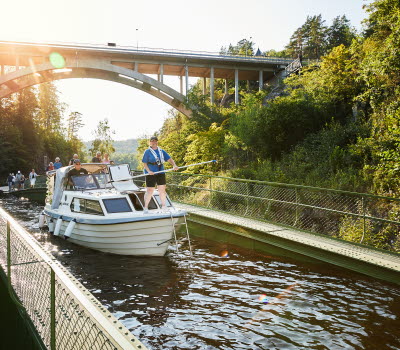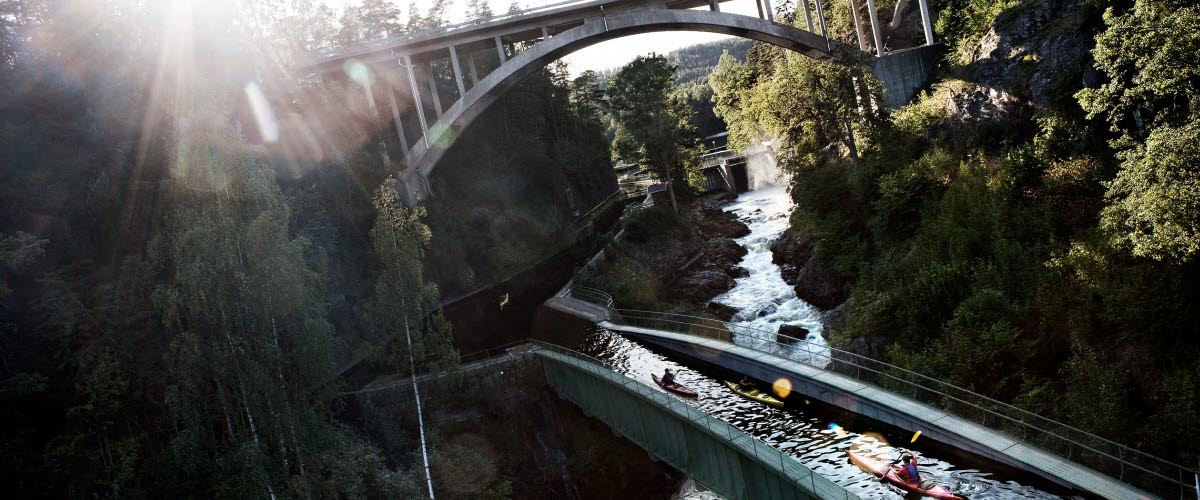The aqueduct in Håverud
Every year, hundreds of thousands of visitors come to Dalsland's canal to see the spectacular meeting between road, rail and waterway. The aqueduct and the lock stairs in Håverud is one of Dalsland's most visited sights and a piece of history that is best experienced on site.
There are many aqueducts in the world. Most were built as Roman stone arch bridges, others in a combination of stone arch bridges with superstructure of cast iron gutters. The aqueduct in Håverud is completely unique in its kind. The aqueduct is a freely hanging bridge, where the water is led into a 33.5 meter long sheet trench above the rapids. The plates are joined with 33000 rivets. No rivets have yet to be replaced. The sight is a unique meeting between motorway, railway and waterway.
Bad conditions
The Dalsland Canal was completed during the years 1864-1868. Depending on the soil conditions in Håverud, it was not possible to build a regular lock here. The rocks were loose, the stream strong and the cliff too steep. Fortunately, there was one person who saw a different solution.
A crazy idea
The renowned canal and railway builder Nils Ericson was involved and took a look at the project. His idea was to build an aqueduct in Håverud, where the boats would be transported over the rapids in a long gutter. A slightly crazy idea, which probably would never have been realized if someone else had suggested it.
Nils Ericson
Nils Ericson had been around for a long time and had built a good reputation in the industry, and was also an apprentice to Baltzar von Platen himself. He could therefore carry out his project and the result was a 33.5 meter long sheet metal gutter, joined by 33,000 rivets. The aqueduct and the entire Dalsland Canal were inaugurated by King Carl XV in 1868.
Read more about the history of the Aqueduct here









